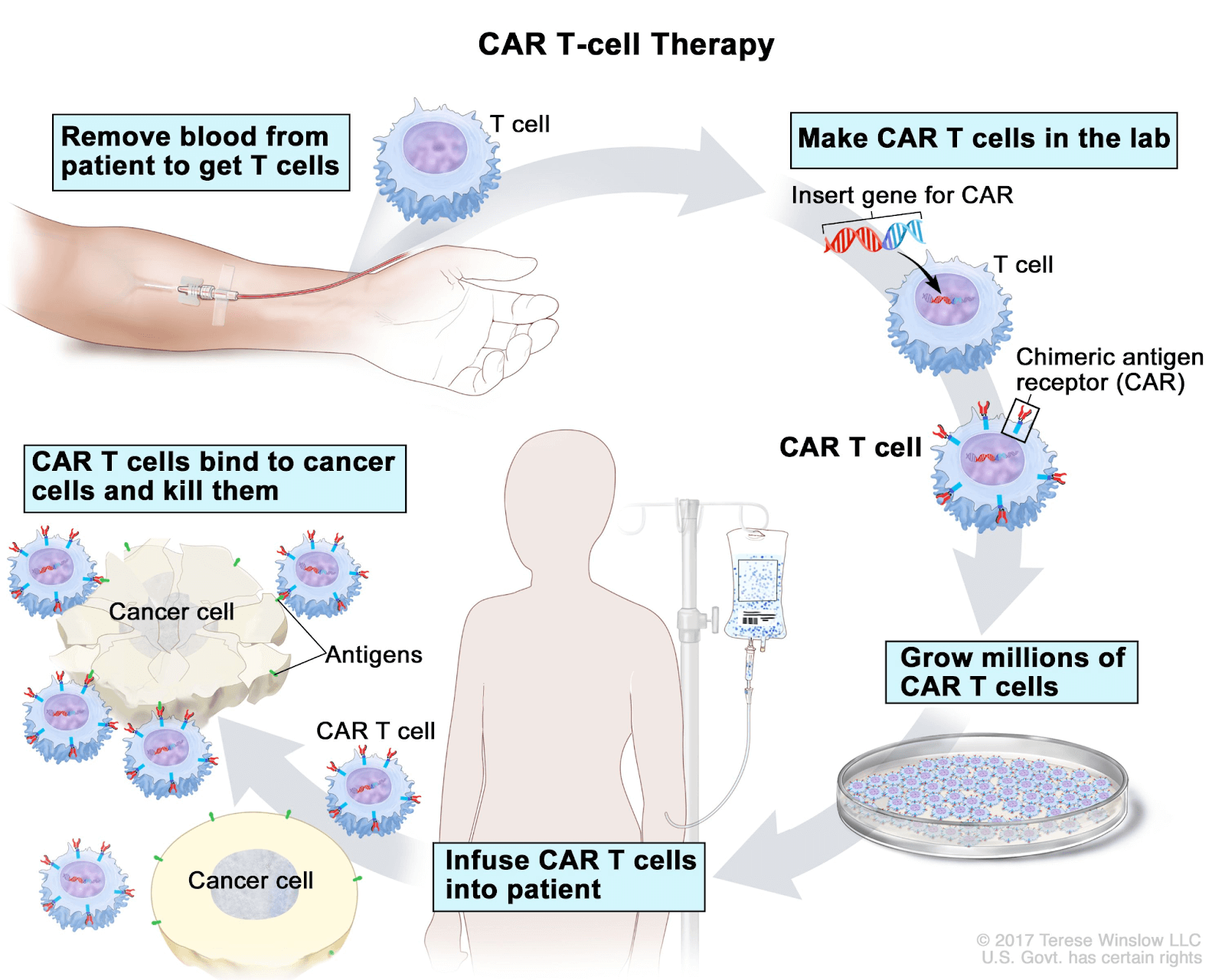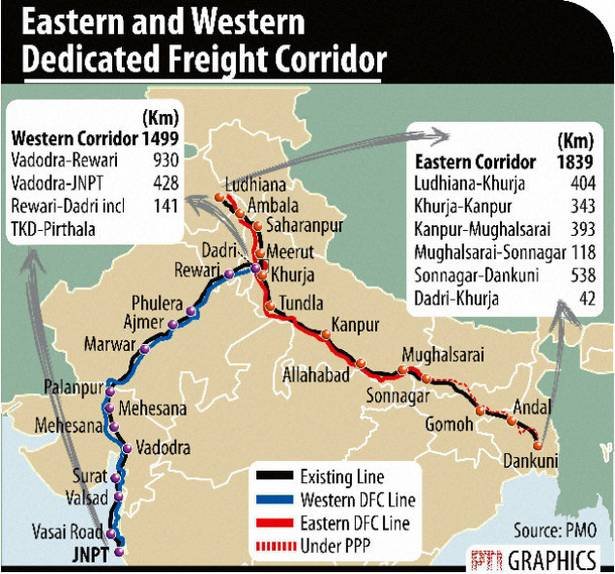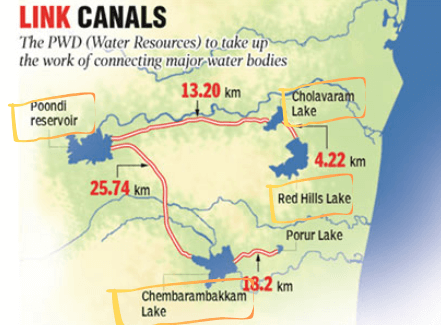
Heatwave | Heat Action Plan
Subscribers of "Current Affairs" course can Download Daily Current Affairs in PDF/DOC
Subscribe to Never Miss an Important Update! Assured Discounts on New Products!
Must Join PMF IAS Telegram Channel & PMF IAS History Telegram Channel
- Context (TH): Parts of Odisha, West Bengal, Telangana, Andhra Pradesh and others are expected to face heatwave conditions.
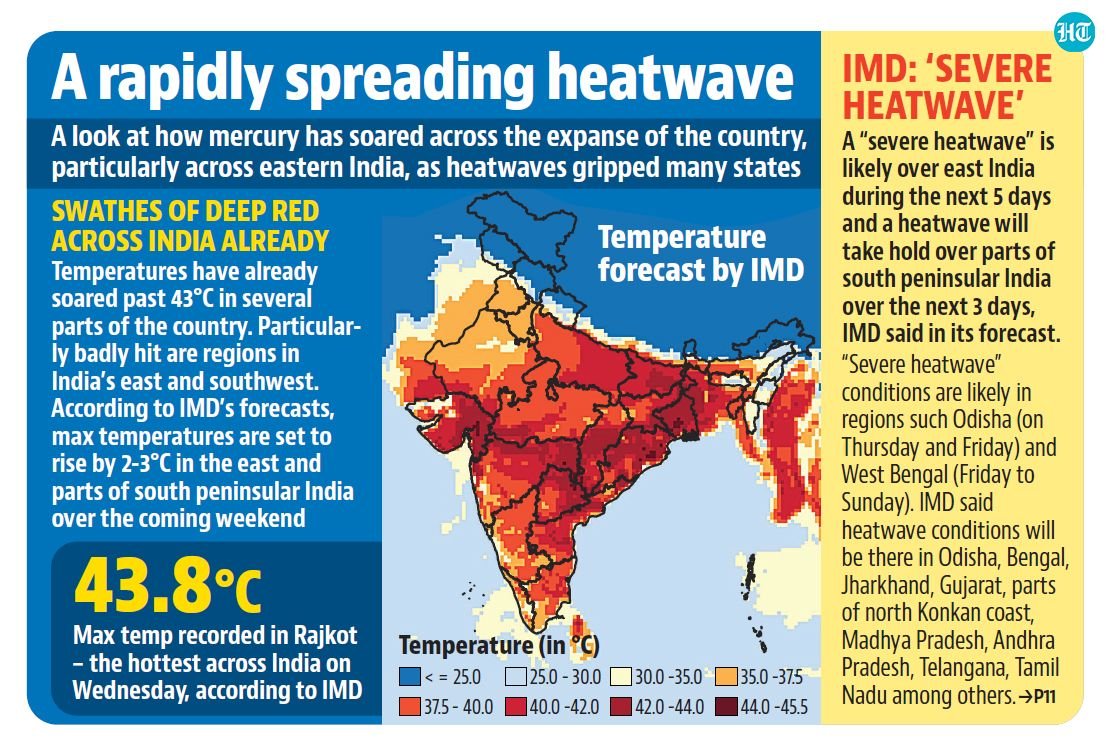
- A heat wave is defined based on the temperature thresholds over a region in terms of actual temperature or its departure from normal.
- In certain countries, it is defined in terms of the heat index based on temperature and humidity or based on the extreme percentile of the temperatures.
Criterion for Declaring Heat Wave
- Heatwave is considered if the maximum temperature of a station reaches at least 40˚C or more for Plains and at least 30˚C or more for Hilly regions.
Based on Departure from Normal
- Heat Wave: Departure from normal is 4.5˚C to 6.4˚C.
- Severe Heat Wave: Departure from normal is >6.4˚C.
Based on Actual Maximum Temperature
- Heat Wave: When actual maximum temperature ≥ 45˚C.
- Severe Heat Wave: When actual maximum temperature ≥47˚C.
|
Criteria for Heat Wave for Coastal Conditions
- When maximum temperature departure is 4.5˚C or more from normal, a Heat Wave may be described, provided the actual maximum temperature is 37˚C or more.
IMD Colour-Coded Warnings
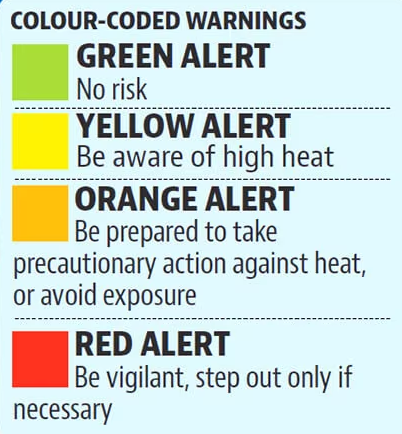
Learn more on Heat Waves, Indian Meteorological Department.
Heat Action Plan
- HAPs are India’s primary policy response to economically damaging and life-threatening heatwaves.
- They prescribe a variety of preparatory activities, disaster responses, and post-heatwave response measures across state, district, and city government departments to increase preparedness and lower the adverse impacts of extreme heatwaves.
- Odisha first developed a Heat Action Plan in 1999 following more than 2,000 Heat Wave deaths in 1998.
- Followed by this, the first city level Action Plan was developed by Ahmedabad in 2013 following severe Heat Wave in 2010.
- The National Disaster Management Authority and IMD are reported to be working with 23 States to develop HAPs.
- There is no centralised database on HAPs, but at least 23 HAPs exist at the State and city level, with a few States, such as Odisha and Maharashtra, laying out district-level HAPs.
What do HAPs recommend?
- Establish Early Warning System and Inter-Agency Coordination
- Early Warning and Indicators of heat-wave
- Forecast and Issuance of Heat Alert or Heat Warning
- Identification of Color Signals for Heat Alert
- Capacity building/training programme for health care professionals at local level to recognize and respond to heat-related illnesses, particularly during extreme heat events.
- Public Awareness and community outreach on how to protect against the extreme heat-wave through print, electronic and social media and Information.
- Collaboration with non-government and civil society to improve bus stands, build temporary shelters, improve water delivery systems in public areas, etc to tackle Heat wave conditions.
What debilitates HAPs from addressing the problem effectively?
Ignoring the local context
- The HAPs (except Odisha and Rajkot HAPs) lack climate analysis of the city or state where it will be implemented.
- A national threshold is what determines a heatwave today. Many cities have been reeling under extreme temperatures, although no heatwave has been declared.
Failure to include assessment of Socio-economic differences in Heat Stress Prone Areas
- The lack or presence of cooling solutions, the ability to afford them, the ratio of size to inhabitants, and the community infrastructure all play a key role in understanding the residents’ ability to respond to heat waves.
- It also can help inform priority areas for implementing adaptation and mitigation infrastructure.
Not Climate-Vulnerability Based
- Ignoring historical climate trends and ground-level assessments of hotspots and socio-economic status has made the HAPs static in nature.
- Thus, the HAP framework is not equipped to develop pre-emptive strategies for key vulnerable areas and those most at risk from heat waves.
Understanding Climate Change Projection
- Very few Action Plan Strategies (like the Telangana Heat Action Plan) have given due consideration to climate change projections and the cumulative impact of the growing urban population.
- The impact of urbanisation and climate change on Heat Waves needs to be studied in detail and considered while framing Action Plans.
Inconsistent methods
- While most HAPs have conducted vulnerability assessments during the development of the plans, the methods adopted are inconsistent.
- It is time to transition to a robust, full-fledged climate risk assessment that can identify the likelihood of heat waves in different areas and estimate the exposure of people and important assets to heat waves.
- Hotspot mapping is needed to prioritise and formulate targeted interventions, which is now possible with easy-to-access geospatial data.
Vulnerable populations
- All HAPs prioritise the protection of vulnerable populations such as low-income communities, children, and the elderly.
- However, what is missing are targeted interventions that account for the varying needs of populations based on local social and demographic factors, in addition to infrastructure elements that could exacerbate heat.
Way Forward
Factoring in Regional Variations
- The scope of a heatwave needs to be expanded to accommodate humid heat, warmer nights, and extreme dry heat. This requires the development of a heat index that accounts for multiple factors beyond temperature.
- Regional variations also need to be considered, as HAPs that are tailored to specific climatic conditions, demography, and a region’s infrastructure can lead to the formulation of strategies and interventions suited to the local context.
Understanding Heat Hotspots
- External factors that influence the heat profile of the areas should also be included.
- Factors like urban heat Islands and how they interact with the existing heat hotspots must be studied and included to help authorities understand the actual changes in temperatures during, before, and after the heatwave occurrences. However, most HAPs lack this analysis.
Resource allocation
- The implementation of HAPs can vary significantly depending on the priorities of local governments and the capacities available. Allocating dedicated budgets for HAPs is necessary.
- Further, dialogues between the state, civil society organisations, and worker unions are essential to co-plan a financial mechanism that allows informal workers to stay indoors during a heatwave without losing their income.
Breaking down silos
- HAPs currently are stand-alone plans with limited finance.
- Pooling in resources would be possible if they are integrated with broader action plans promoting urban resilience and climate adaptation.
- Such integration will likely affect the overall effectiveness of HAPs and their implementation, prompting improvements in data collection and monitoring systems, which are essential to helping assess their effectiveness over time.
Focus on building infrastructure
- Finally, while HAPs mention long-term measures, they are limited to building infrastructure (especially cool roofs), with a cursory mention of green and blue spaces.
- For HAPs to be effective, focused planning on including nature-based solutions to address extreme heat in hotspots is a must.





![PMF IAS Environment for UPSC 2022-23 [paperback] PMF IAS [Nov 30, 2021]…](https://pmfias.b-cdn.net/wp-content/uploads/2024/04/pmfiasenvironmentforupsc2022-23paperbackpmfiasnov302021.jpg)
